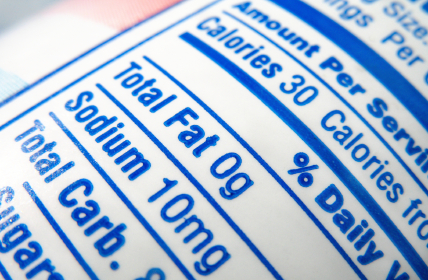Let’s face it…food labels are confusing. You have to read them to know what you’re eating.
But do you know how to interpret them? That’s a different story.
Take “healthy” foods proudly claiming they’re “all natural.” What does that “all natural” designation really mean? For starters, organic and natural are not the same thing.
The Food and Drug Administration hasn’t even defined what “natural” means. As long as food doesn’t contain added colors, artificial flavors, or synthetic substances, food makers can slap an “all natural” label on it.1
For example, chicken. The label may say that it’s “natural.” But it could have been injected with the “natural” ingredients sodium and water to increase its weight. Or it can even contain GMOs, antibiotics, and growth hormones. But hey, the color or flavor wasn’t altered. So it’s still “natural.”
But the labels on these foods are not only misleading—they’re dangerous…
| Grocery shopping tip: Shop the perimeter. When you enter a grocery store avoid going down the aisles. Most packaged and processed foods are in the middle. If you stay along the perimeter you will have access to fresh foods such as the produce section, the meat and seafood department, and the dairy case. |
The household tea brand Celestial Seasons say they founded their company on the belief that all-natural herbal teas could help people live healthier lives.2 But earlier this year they came under fire. It turned out that 91 percent of their teas tested contained an ingredient that’s far from “natural.”3
Eurofins Scientific—an independent testing company—analyzed 11 of Celestial Seasons’ most popular teas. Including the well-known Sleepytime. Ten out of the 11 tested had excess pesticides.
One of the more outrageous claims…Food manufacturers will go as far as to say a product with high fructose corn syrup is natural. How can they get away with it? Simple… They say it comes from corn. You should never eat foods with high fructose corn syrup.
The names they use are confusing too. When a product says zero trans-fat that doesn’t mean it actually contains zero. Manufacturers can label something as having no trans-fat as long as it contains less than 0.5 grams per serving.4 In the ingredients they are listed as hydrogenated oils and shortening. And that’s not all…
Just like trans-fat, “cholesterol free” doesn’t actually mean no cholesterol. It just needs to have less than 2 mg per serving.5
Think light actually means light? There’s no set definition for that label either. Food manufacturers can call a product light if it has at least 50 percent less fat than the amount in comparable products.6 (Keep in mind, we are in no way recommending a low cholesterol or low fat diet. We’re just pointing out how badly these foods are represented.) Another label that can be dangerous—especially for diabetics—is “no sugar added.” These products can still contain sugars. Sugar-free can mean it contains dangerous artificial sweeteners. And sugar goes by several names. Some of the hidden ones: sucrose, fructose, glucose, dextrose, galactose, lactose, maltose, corn syrup, and high-fructose corn syrup.7 Those are the ones you definitely want to stay away from.
When it comes to your diet, you need to be proactive. Learn to decipher what’s healthy and what products to stay far, far away from. Labels are not on food items to help you. They are on products to sell. Bottom line: avoid as many foods with labels as you can. Always eat whole foods where you know exactly what you are getting.
Like this Article? Forward this article here or Share on Facebook.
References:
1 http://health.com/health/gallery/0,,20599288_2,00.html
2 http://celestialseasonings.com/about
3 http://mnn.com/food/healthy-eating/blogs/are-teavana-and-celestial-seasonings-teas-safe-to-consume
4 http://mayoclinic.com/health/trans-fat/CL00032
5 http://nhlbi.nih.gov/health/public/heart/chol/fabc/table2.htm
6 http://health.com/health/gallery/0,,20599288_10,00.html
7 http://institutefornaturalhealing.com/2013/05/five-healthy-and-natural-sugar-alternatives/

